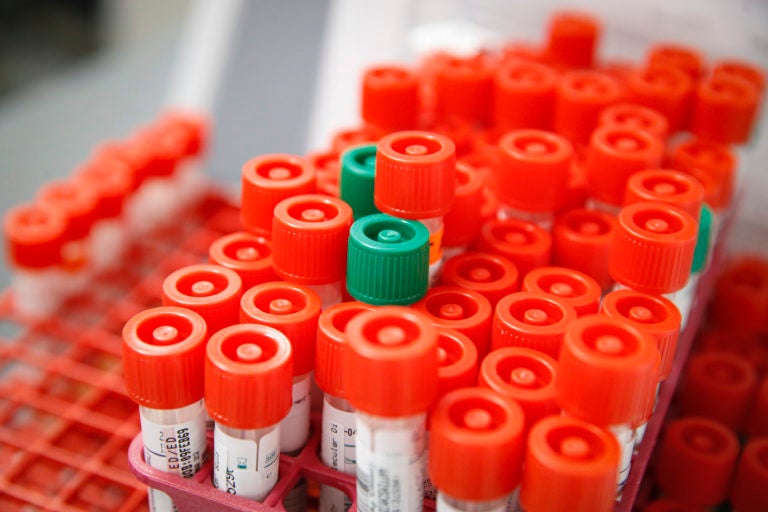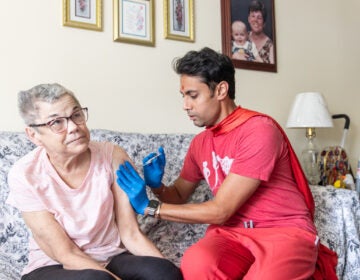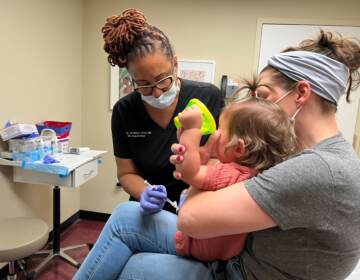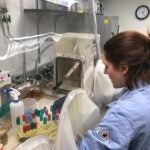Coronavirus and COVID-19: Some frequently asked questions
Here is an FAQ about the COVID-19, the coronavirus that causes it, and its symptoms.

A laboratory technician prepares COVID-19 patient samples for semi-automatic testing at Northwell Health Labs, Wednesday, March 11, 2020, in Lake Success, N.Y. The US Food and Drug Administration has approved faster testing protocols as the viral outbreak continues to spread worldwide. For most people, the new coronavirus causes only mild or moderate symptoms. For some it can cause more severe illness. (AP Photo/John Minchillo)
The World Health Organization, the United Nations agency charged with providing leadership on global public health issues, has declared COVID-19 a pandemic — an epidemic that has spread to several continents or countries.
Here is an FAQ about the disease, the coronavirus that causes it, and its symptoms.
Where did this virus come from, and how does it travel?
The coronavirus, Sars-CoV-2, is a respiratory virus that originated in China in 2019. It likely started in bats, although this is not officially confirmed, and then jumped to humans. Viruses are incredibly small and travel through droplets of human saliva. Transmission normally occurs when one of these droplets from an infected person gets into the eyes, nose or mouth of a healthy person. The virus can also spread through droplets left by an infected person on a surface, like a doorknob, later touched by an uninfected person.
Do I have it?
Symptoms of COVID-19 include high fever, a bad cough, trouble breathing, and shortness of breath. If you’ve been in contact with a confirmed case of COVID-19 or recently traveled somewhere with an outbreak, you could have an asymptomatic case. Don’t panic, and if you are worried, consult your doctor.
Should I be tested?
Two groups of people should be tested: If you have been to an area with a COVID-19 outbreak or know that you came into contact with a confirmed case of COVID-19, you should get tested. But remember, due to community spread, people with symptoms who don’t have a clear vector of infection (such as foreign travel or direct contact with another sick person) should also be tested. In either case, call your doctor or the hospital or clinic in advance, so they can advise you and prepare.
What happens when I get tested?
A doctor will swab the back of your throat, maybe the back of your mouth, as well as collecting a sputum sample (they’ll ask you to cough phlegm into a cup). They may also want to do a flu test, another nose swab, to rule that out. Be prepared, the medical personnel doing these tests will be wearing face shields, gloves, gowns, and masks. This is for their protection and the protection of the next patient they see, so don’t worry.
What are the tests? Are they like a flu test?
Yes and no. The actual swab is a lot like the flu test, essentially a Q-tip going in your nose. The technical test is pretty different. There are rapid flu tests that detect bits of the flu virus that trigger your immune system. There is no test like that for the coronavirus (Sars-CoV-2) yet, so things take a bit longer.
Are tests available?
The Centers for Disease Control and Prevention made testing kits, and now some private institutions are making their own. As of March 9, LabCorp made its test available to the public, which should increase the number of available tests. You will still need to talk to your doctor before getting a test. Often, an initial screening will be done over the phone before you are asked to come in.
When will I get my results back?
These tests, done by polymerase chain reaction or PCR, magnify RNA (the genetic information of the virus) and then screen for RNA belonging to Sars-CoV-2. The test itself takes about four hours, according to the Pennsylvania Department of Health, but you might not get results back that quickly. According to Russel Kaufman, president emeritus of the Wistar Institute in Philadelphia, “with the PCR approach, the diagnosis can be established or confirmed within one to several days.” If you get a positive test from your health care provider, the test will be run again by the CDC to confirm the case. This is likely not going to be a fast process.
If the doctor tells me to self-quarantine, what does that mean?
If you have been exposed to a diagnosed case of COVID-19 or have mild symptoms yourself, self-quarantine means not going to work or school, and avoiding going out entirely unless it is to a medical appointment. You should avoid taxis, ride shares or public transit. Wearing a mask will limit the spread of viral droplets from you. Try to stay 6 feet away from other people and avoid coughing or sneezing on anyone. The name of the game is reducing viral spread, so that means wiping down surfaces, trying to keep a distance, washing hands, and using hand sanitizer with 60% or greater alcohol content. Stay in touch with your doctor, especially if you start feeling worse.
If I do have COVID-19, what does that mean for me? For my family? For my pet?
If you stay at home, you’ll be told to self-isolate. The most important things are focusing on getting better, and avoiding spreading COVID-19 to anyone else. Stay hydrated and keep in touch with your health care provider, especially if you think you’re having trouble breathing or have a high fever. For everyone’s health, keep a reasonable distance, around six feet. Treat pets as you would other family members — try to avoid snuggling, kissing, or food sharing with them. COVID-19 is zoonotic, meaning it spread from animals to humans. Protect your pets as you would humans. If you are alone with your pet in isolation, take all reasonable precautions by wearing a mask and washing your hands.
If I’m not sick, how worried should I be?
That’s a complicated question. If you are young and healthy with no underlying health risks (no heart disease, lung disease or diabetes), you are probably at a low risk — especially if you have regular health care. If you feel ill, let your doctor know, but even if you contract COVID-19, it might be a mild case. The best thing to do is practice good hygiene and, when possible, stay home. If you are over 60, practice social distancing.
Why can’t I just wear a mask?
If you aren’t sick or at a high risk of getting COVID-19, you don’t need a mask . If you’re caring for a family member or friend with COVID-19, you might, but ask a medical professional what the best precautions are. Many commercially available masks don’t keep out viruses because they don’t fit close to the face. Viral particles are very, very small. The right type of masks, N-95, should be reserved for health care workers who really need them. Obviously, if your doctor tells you to wear a mask, do so. Likewise, if a doctor suggests masks for your family or caregiver, they should also wear them. But in general, save masks for people who need them and instead focus on washing your hands and not touching your face.
So I can’t wear a mask, and I can’t touch my face?
The virus doesn’t infect through regular skin contact but through mucosal membranes, like your nose, your eyes, and your mouth. When you touch your face, you take any possible infectious things you’ve touched, any viruses that were lingering on doorknobs or in buses, and show them how to get in.
Will soap really kill this virus? It’s just soap …
It is indeed “just soap,” but it has a miraculous chemical interaction with viruses. A virus is made of genetic material (RNA), proteins and fats. The fatty membrane wraps around the RNA and protects the virus. Soap has a fatty component too, and it out competes the fats in the virus’ fatty coating, breaking the virus apart. So the soap unsticks the virus from your skin, and also the virus from itself. At least 20 seconds of vigorous scrubbing help detach and agitate the virus, breaking it up. Think of this a bit like sloughing snow off your car with the heater on. You’re physically removing that snow (scrubbing), but the heat is melting and loosening it and making it easier to de-ice your car.
WHYY is your source for fact-based, in-depth journalism and information. As a nonprofit organization, we rely on financial support from readers like you. Please give today.


![CoronavirusPandemic_1024x512[1]](https://whyy.org/wp-content/uploads/2020/03/CoronavirusPandemic_1024x5121-300x150.jpg)



